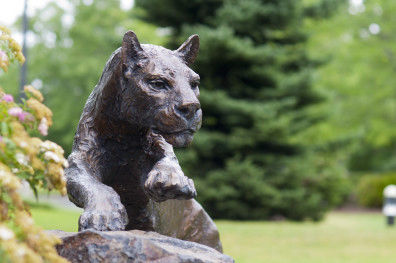Explore the collection by campus: The visualization below is a bar chart which shows the total number of pieces acquired by year and institution. Hovering over each dot will provide the institution name and the number of pieces acquired that year. This visualization is best used for:
1) Learning which institutions had the largest acquistions in any given year and,
2) Looking at the acquisitions over time for a specific institution by selecting the name of an institution from the panel on the right. This will highlight the corresponding circles for that institution across the entire chart.
